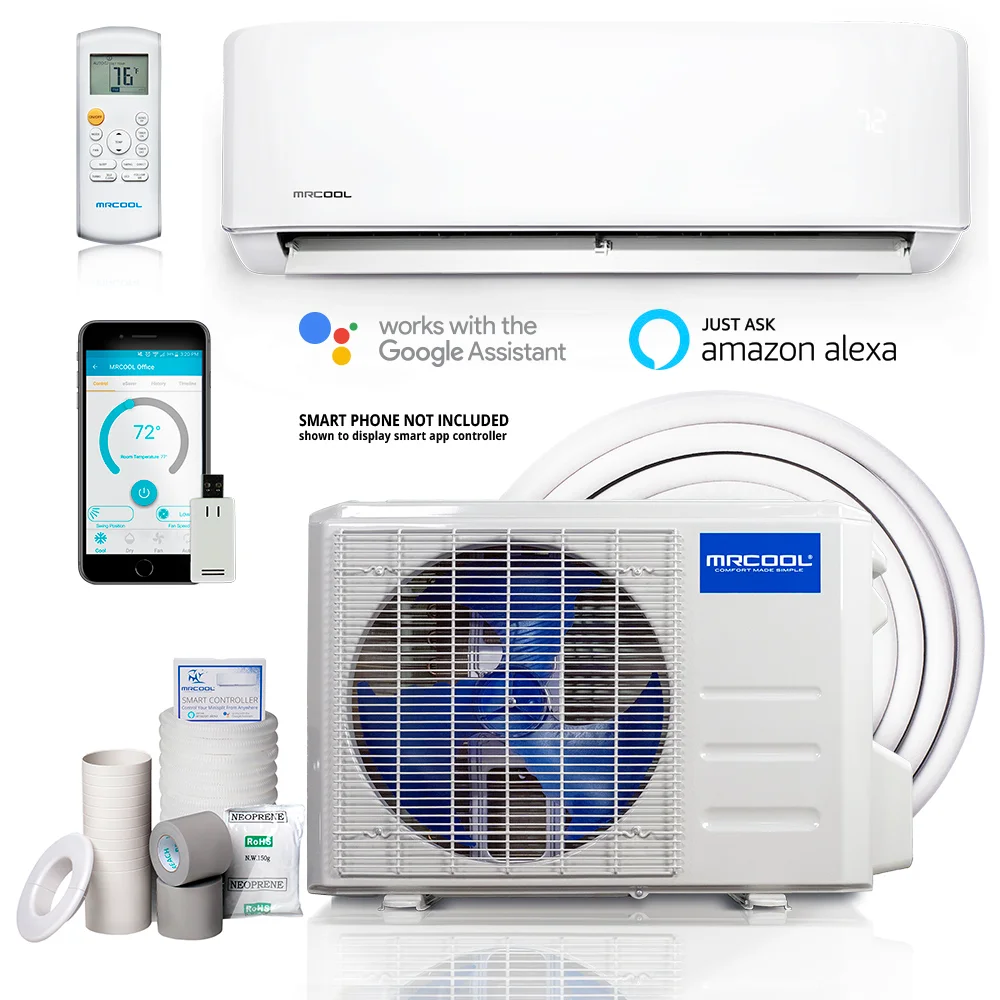Efficient climate control is crucial for maintaining a comfortable indoor environment, whether at home or in the office. Among the various options available, the 36k BTU mini split system stands out for its versatility and efficiency. This guide will explore the benefits and features of the 36k BTU mini split, while also highlighting how it complements heat pump systems for a comprehensive heating and cooling solution.
Understanding the 36k BTU Mini Split System
The BTU mini-split system is a ductless heating and cooling solution that provides efficient climate control for larger spaces. This system consists of an outdoor compressor unit and one or more indoor air-handling units. The main advantage of a mini split system lies in its ability to offer zoned heating and cooling, which means you can control the temperature of individual rooms or areas independently.
Key Features of the BTU Mini-Split:
- Energy Efficiency: The BTU mini-split system is designed to be energy-efficient. It uses inverter technology to adjust the compressor speed based on the cooling or heating demand, reducing energy consumption and lowering utility bills.
- Easy Installation: Unlike traditional HVAC systems that require extensive ductwork, the BTU mini-split system is relatively easy to install. The indoor units can be mounted on walls or ceilings, and only a small hole is needed to connect them to the outdoor unit.
- Quiet Operation: Mini split systems are known for their quiet operation. The indoor units operate at low noise levels, making them ideal for bedrooms, offices, and other areas where noise can be disruptive.
- Improved Air Quality: The BTU mini-split system includes advanced filtration options that help remove dust, allergens, and other pollutants from the air, improving indoor air quality.
- Flexible Zoning: With the ability to control the temperature of individual zones, the BTU mini-split system provides personalized comfort. This flexibility also helps save energy by allowing you to heat or cool only the areas in use.
Integrating a Heat Pump Ducted System
While the BTU mini-split system offers many benefits, integrating it with a heat pump system can further enhance your home’s climate control capabilities. A heat pump system distributes heated or cooled air through a network of ducts, providing consistent temperature regulation throughout the entire building.
Benefits of Combining the BTU Mini-Split with a Heat Pump System:
- Enhanced Efficiency: By combining a BTU mini-split with a heat pump system, you can achieve higher overall energy efficiency. The mini split system handles localized temperature control, while the ducted system ensures uniform distribution of air.
- Year-Round Comfort: Heat pump systems are capable of providing both heating and cooling, making them a versatile solution for year-round comfort. The BTU mini-split system can supplement this by addressing specific areas that require additional temperature regulation.
- Improved Air Distribution: The heat pump system ensures that conditioned air is evenly distributed throughout the entire building. This can be particularly beneficial in larger homes or buildings where certain areas tend to be warmer or cooler than others.
- Increased Property Value: Homes and buildings equipped with advanced HVAC systems, such as a combination of BTU mini-split and heat pump systems, often have higher property values due to the enhanced comfort and energy efficiency they provide.
Choosing the Right System for Your Needs
Selecting the right combination of heating and cooling systems depends on various factors, including the size of your home, your climate, and your specific comfort needs. Here are some tips to help you choose the best setup:
- Assess Your Space: Determine the size of the area you need to heat and cool. The BTU mini-split system is suitable for larger spaces, but it’s important to ensure that its capacity matches your requirements.
- Consider Climate Conditions: If you live in an area with extreme temperatures, a heat pump system can provide efficient heating during winter and cooling during summer. The BTU mini-split can offer additional support in areas with high temperature fluctuations.
- Evaluate Energy Efficiency: Look for systems with high SEER (Seasonal Energy Efficiency Ratio) ratings. Both the BTU mini-split and heat pump systems are available in energy-efficient models that can help reduce your energy bills.
- Professional Installation: To maximize the efficiency and performance of your HVAC systems, ensure that they are installed by qualified professionals. Proper installation is crucial for achieving optimal performance and avoiding common issues such as leaks or poor airflow.
Maintenance and Upkeep
Maintaining your BTU mini-split and heat pump systems is essential for ensuring long-term performance and efficiency. Here are some maintenance tips:
- Regular Cleaning: Clean or replace the air filters in your mini split system regularly to maintain good air quality and system efficiency. The heat pump system’s filters should also be checked and cleaned periodically.
- Inspect Ductwork: For the heat pump system, inspect the ductwork for any leaks or damage. Sealing leaks can improve efficiency and prevent conditioned air from escaping.
- Professional Servicing: Schedule annual maintenance with a professional HVAC technician. They can inspect both the mini split and ducted systems, perform necessary tune-ups, and address any potential issues.
- Monitor Performance: Keep an eye on the performance of both systems. If you notice any unusual noises, reduced efficiency, or uneven temperature distribution, contact a professional for an inspection.
Conclusion
The 36k BTU mini split system, when paired with a heat pump ducted system, provides a powerful and efficient solution for year-round climate control. With its energy efficiency, quiet operation, and flexible zoning capabilities, the BTU mini-split system can significantly enhance indoor comfort. Integrating it with a heat pump system ensures consistent temperature regulation and improved air distribution, making it an ideal combination for larger homes and buildings. By choosing the right systems and maintaining them properly, you can enjoy a comfortable and energy-efficient indoor environment.


